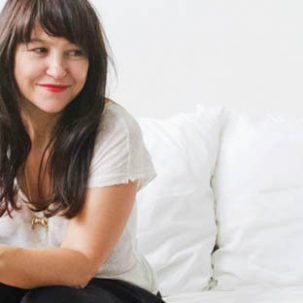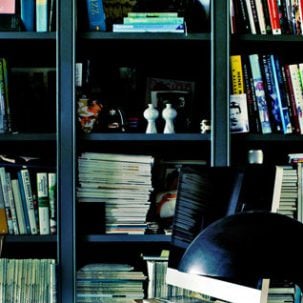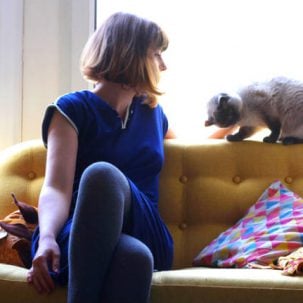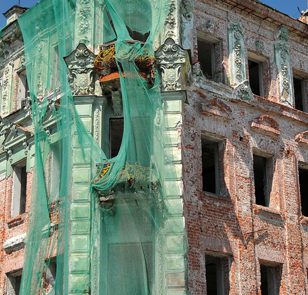Online art market sales up 12%
April 17, 2018
Trust is needed to help the sector grow and new technology could help create it. Bobby Read, Hiscox Head of Art and Private Clients, drills down into the trends revealed in the new Hiscox Online Art Trade Report 2018.

The market for art bought over the internet hit $4 billion in sales for the first time last year, but it is yet to fulfil its full potential.
Despite its rapid expansion with estimated sales up 12% to $4.22 billion the online art market’s growth rate has slowed compared to previous years. According to our latest annual report, its growth rate in 2017 is lower compared to 15% in 2016 and 24% in 2015.
This growth rate lags behind the wider online luxury goods market and we predict from our report findings this will continue for the foreseeable future.
Adopting tech innovations
New technology, such as artificial intelligence (AI) and blockchain, could help the online art market reach new heights.
Online platforms Artsy, Etsy and Sotheby’s have invested in AI and machine learning technology in the past 12 months. Such cutting-edge tools have helped other more general online retailers, such as Amazon, boost their sales by predicting people’s tastes and interests based on their online browsing habits. Perhaps these could be the new weapons in the war for new online art buyers?
Similarly blockchain could be the new technology that enables the online art market to really take off. Created as the technical gubbins behind the cryptocurrency Bitcoin, blockchain could provide the online art market’s Holy Grail: an incorruptible electronic sales ledger containing an artwork’s previous owners and what they paid for it.
That could go a long way in reassuring nervous art buyers, 84% of whom said that a certificate of authenticity would encourage them to take the plunge and buy art online.
However that relies on the information entered in the blockchain being true and correct – two things that can never be guaranteed in the art world. The price and ownership can’t be tampered with once they’re on the system but what’s to stop the seller and buyer secretly agreeing to enter a different price than the one that was actually paid? Who’s to say the piece for which this electronic paper trail has been created on blockchain is even genuine?
Buyers remain reluctant
These new technologies may well become vital. As what seems to be holding the market back is its inability to persuade new clients to buy over the internet. While overall arts sales online are up, the percentage of art buyers who bought art online fell last year from 49% in 2016 to 43% in 2017.
Hesitant buyers remain worried they might purchase artworks that turn out either to be overpriced or, worse, fake. Nine out of ten new buyers we surveyed said price transparency was essential when deciding whether to buy pieces over the internet.
I believe there are still kinks to work out before buying art over the internet is as simple and easy as booking a cab or a hotel room. Ultimately though collecting art is about passion and desire. Often, it’s simply how hard a person has fallen for a piece that will dictate how much they pay for it and whether they choose to ignore any whispers about its history and authenticity.
The good news is that nearly three quarters of those who’ve bought art over the internet have bought more than one piece in the past 12 months, indicating that those who have used the online art market feel confident to do so again.
New tech, new risks
While many online art dealers and galleries predict the rise of new technologies, few seem to be prepared for them. So although most (60%) online art platforms believe that cryptocurrencies will become a payment method, only 7% actually accept them, while fewer than a quarter (22%) are planning to do so over the next 12 months.
Also, more than half (54%) of the online art platforms say they have been targets of a cyber-attack in the past 12 months. Of those, around 15% had been successful. So it’s worrying that our survey revealed a widespread lack of preparedness for the imminent introduction of the biggest shake-up in data regulations for over 20 years.
The General Data Protection Regulation (GDPR), which comes into force in May, imposes tougher new responsibilities on how organisations use, store and protect their customers’ personal information, yet 41% of galleries and 24% of online art platforms were not aware of GDPR when we surveyed them in the first two months of 2018.
Future is bright, consolidation could be imminent
The future for the online art market is bright, that’s certain. What that future will look like in detail in five or ten years’ time remains foggy. The long-awaited consolidation of the market still hasn’t taken place, even though eight out of ten of the galleries and dealers we surveyed expected it to come.
Conflicting opinions within the industry as to what its future shape will take, could shake and stir the online art market into a cocktail of change.
Four out of ten of our respondents in the business think the online art market will consolidate into only a few global platforms, while another three out of ten believe regional and local platforms will dominate. This tells me that the race to shape and reign over this business remains wide open. Those who are bold, brave and innovative could be the ones to reap the risk-taking rewards.
Explore the Hiscox Online Art Trade Report 2018






 Very satisfied with the service from Hiscox as always
Very satisfied with the service from Hiscox as always

